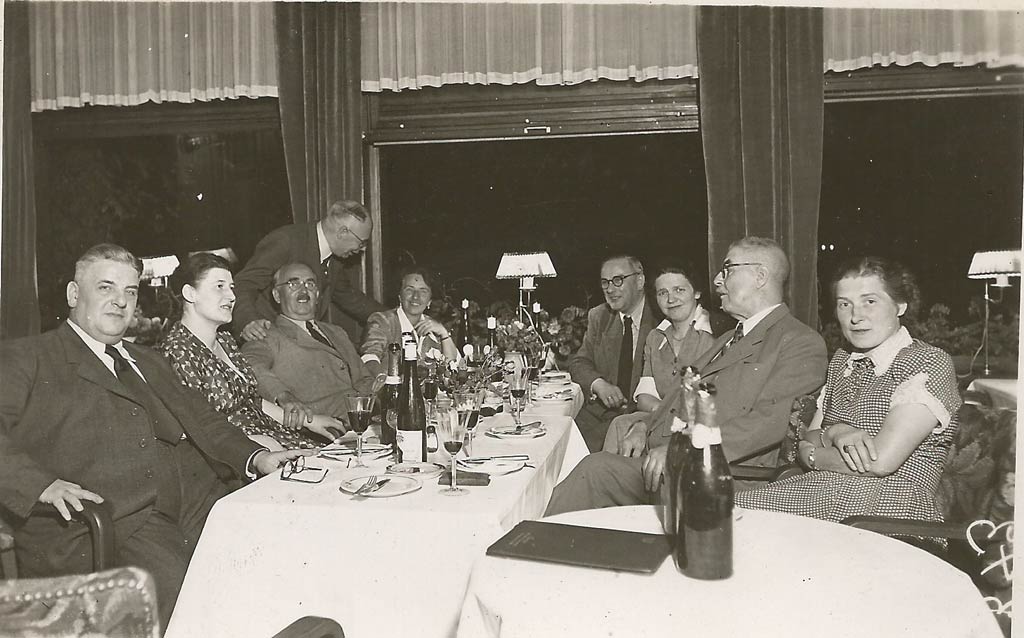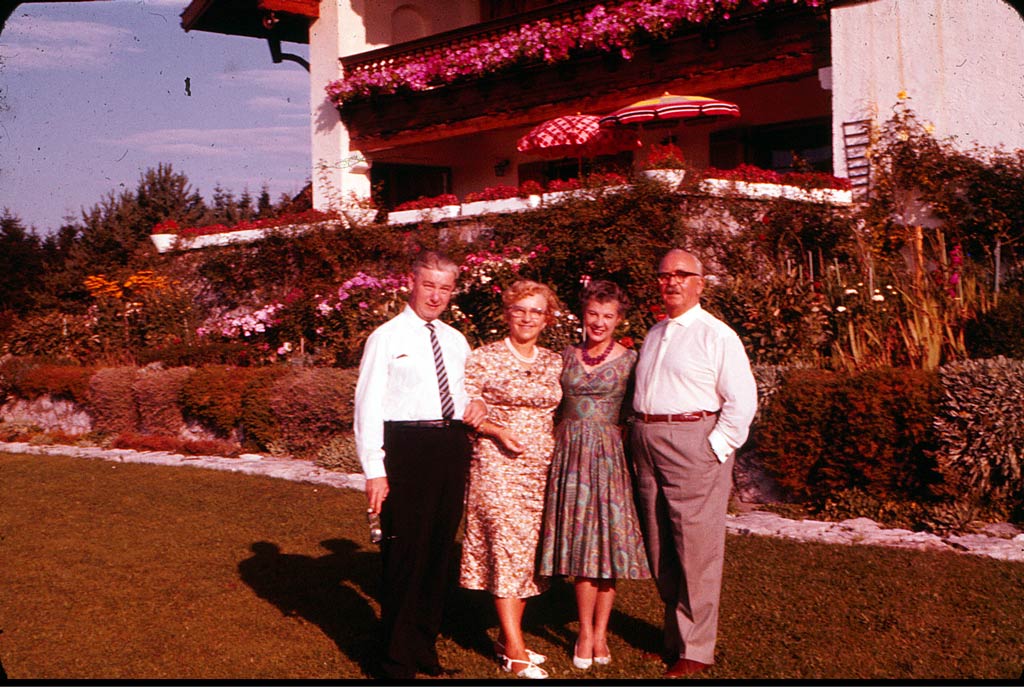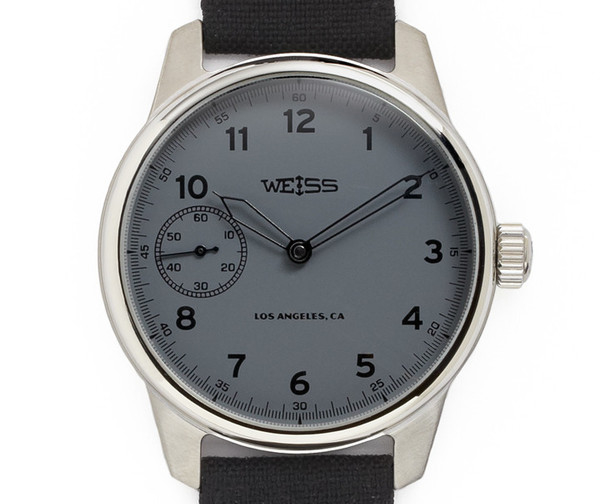Sometime around 1992, when I was in the seventh grade, my father presented me with the gift of a new watch. I had started in a new school, entering into a new phase of adolescence, pressed with the task of making new friends and fitting in. The watch was nothing extravagant, a simple Victorinox Swiss Army watch, grey plastic case with the classic white dial, luminous hands, enameled red bezel and a canvas strap with a leather buckle. Despite its quotidian standard, it was mine, and receiving it felt somewhat like a rite of passage, like the old-timey schoolboy who wears trousers for the first time, at last too mature for knee-socks and britches. It was also a considerable step up from the rubber Casio I had been wearing, with the sallow, miniature incandescent lightbulb inside — the 80’s had ended, after all.

My father has always been a man of subdued taste, with a preference for blue jeans weathered by shop oil, white t-shirts, good German beer and a weird near-obsession with verifying the authenticity and pedigree of the things in which he takes interest. This habit certainly cut down on clutter, his fancies remaining focused only upon things with the most interesting and traceable histories. He always wears a wrist-watch, at the time of the aforementioned gift I seem to recall a string of good, accurate Pulsar railroad watches before he upgraded himself to a black, rubber Victorinox. Since then, I have always had my eye on one watch or another, but the basis for my present interest in wrist-watches and the foundation of my expanding collection has been motivated by the unexpected revelation of an interesting bit of family history.
So, fast-forward about seventeen years to the Fall of 2009, when I received a rather cryptic e-mail from my father (now lost), which outlined his discovery that the Laco Watch Company is still in operation in Pforzheim, Germany, producing scaled-down replicas of its own classic flieger style watches. At first glance, this information was meaningless to me, but in reading on I learned that the company was co-founded by my father’s Uncle Ludwig back in 1925. In fact, Ludwig Hummel is not my great-uncle, but the husband of my grandfather’s first cousin, Lotte Kolsch (yes, of the Kolsch beer dynasty — but that’s another story).

Uncle Ludwig and his business partner, Frieda Lacher, derived the name Laco from the contraction of Lacher & Company, and went about installing Swiss movements in German-made cases of their own design. Ludwig became dissatisfied with German dependence upon Swiss-made movements, and in 1933 established Durowe (Deutsche Uhren-Rohwerke) in order to produce movements in Germany and supply them not only to Laco but to other German watchmakers. Durowe movements even wound up in watches produced by another famous flieger manufacturer, Stowa.
In 1936, Ludwig broke away from his partnership with Frieda Lacher (replaced by her son, Erich), but continued to produce watches under the Laco-Durowe name. It was during this period that the now legendary flieger, or pilot’s watch, went into production, Uncle Ludwig having been commissioned to produce them en-masse by the German government for use by the air force. According to further family lore, it was, in fact, the German government that designed the classic flieger watch dial and provided the specs to manufacturers including Laco-Durowe.
Most of this history can be found online with only minimal effort, though the details of exactly who did what and precisely when tend to vary. There is no question, however, that the Laco-Durowe pilot’s watches produced during the war were indeed manufactured by Uncle Ludwig, as his name is printed on the presentation boxes of that era.
The semantics of history aside, at this point in the story, the most important thing to me and to my father was to uncover one critical detail: “who’s in charge now?” As has been the case with so many other well-known names in watchmaking, it is often the name alone that has survived, bought up by clever entrepreneurs who capitalize on some impressive historical tale.

While my dad set about his investigation, I was amazed to discover the broad presence of Laco time pieces and movements littered about our house. An old Laco watch from before World War II sitting in a desk drawer, a Hamilton watch curiously housing a Laco movement lying in a cupboard, not to mention a number of family photos not only with visible Laco timepieces adorning people’s wrists, but of Ludwig Hummel himself, partying with my grandparents and great-grandparents in Germany from the 1920s through the 50s.
As it turns out, Laco’s lineage has remained relatively well condensed since Uncle Ludwig retired around the time of the Quartz Crisis, having sold Laco-Durowe to Timex in 1959. Erich Lacher, who replaced Ludwig as Frieda’s business partner in 1936, continued to produce watches with his own company, Erich Lacher Uhrenfabrik, maintaining its local reputation as Laco’s “little sister.” In 1988, the managing partner of Erich Lacher Uhrenfabrik, a gentleman named Horst Günther, managed to acquire the rights to Laco’s name and logo from Timex, thus reuniting the two brands. The company is now run by Mr. Günther’s son, Andreas, who seems well dedicated to honoring the company’s significant history and making sure that “Made in Germany” continues to really mean something.
Since Laco’s return to production in 2000–when the company issued a limited series of recreated World War II-era fliegers, complete with Durowe movements and to their original and comically large 55mm proportions–a steady traction seems to have developed in recognizing the historical significance of its aviator line. Still, the real appreciation does seem limited to collectors and enthusiasts, with almost no circulation in the North American market aside from a seller exclusive to eBay and, more recently, Long Island Watch and Watch Mann. One may buy direct from Laco’s evolving website, which is host to a very strong selection of not only classic aviator, marine (navy) watches and chronographs, but to a developing line of re-issued vintage designs and some newly commissioned contemporary models reminiscent of Braun or Swatch.
Despite having an apparent offering for everyone (and in a moderately accessible price range), Laco continues to be overshadowed by other historic brands such as Stowa and IWC, which have maintained their presence on the market and managed to build a greater global awareness over time. Stowa, interestingly enough, has apparently resurrected the Durowe name and begun to utilize the newly minted Durowe 7440 movement in its high-end manual winding Marine watches. Ironically, this indirectly makes Stowa somewhat more accurate in its composition than Laco’s present offering, with the descendant of Uncle Ludwig’s German-made movement under the hood, while Laco continues to use rebranded Swiss and Japanese movements.

The truth is, there is that portion of the high-end buying community in which little regard is paid to verifying authenticity, so good looks and a good marketing scheme tend to be justification enough for ostentatiously waving one’s Centurion Card around the jewelry store. Tire-kicking aside, brands like Stowa and Laco thankfully remain in a moderate price range accessible to a much broader range of the financial spectrum. I would suggest that this opens up these significant brands to a large community of individuals whose interest in history overpowers the balance of their checking accounts.
Despite the peaks and valleys of buyouts, pop-up brands and competition from cheap electronic alternatives, I think Uncle Ludwig would be proud to know that his Laco brand has persevered and after only a brief hiatus returned home to Pforzheim to carry on a tradition in the authentic German watchmaking community. True, Laco has come full-circle in falling back on using imported Swiss components, though according to my contacts in the company, special care is taken in assembling movements in-house, and all are emblazoned with Laco’s logo. I am optimistic that the watch buying community will take interest in something deeper than an impressive price-tag and a sassy website, and take stock in owning a real piece of history.
by Christian Kriegeskotte









 Featured Videos
Featured Videos









